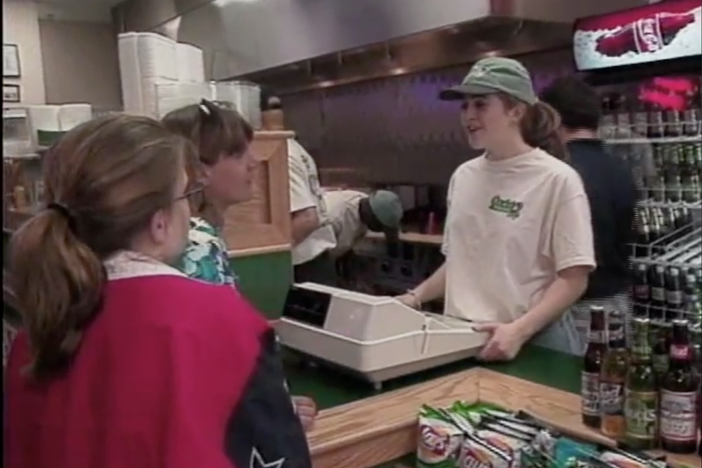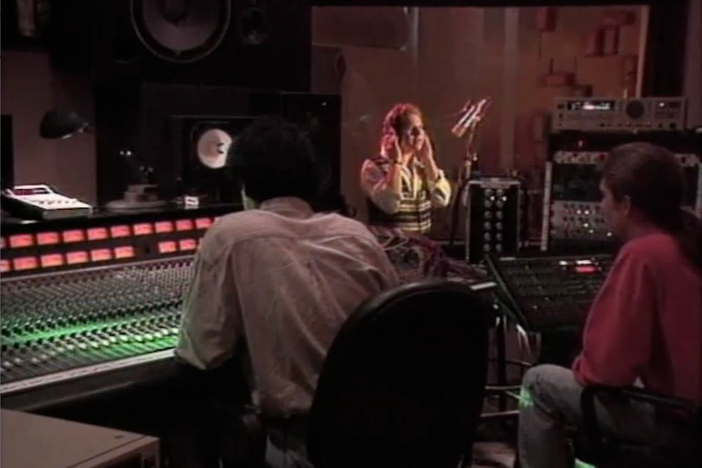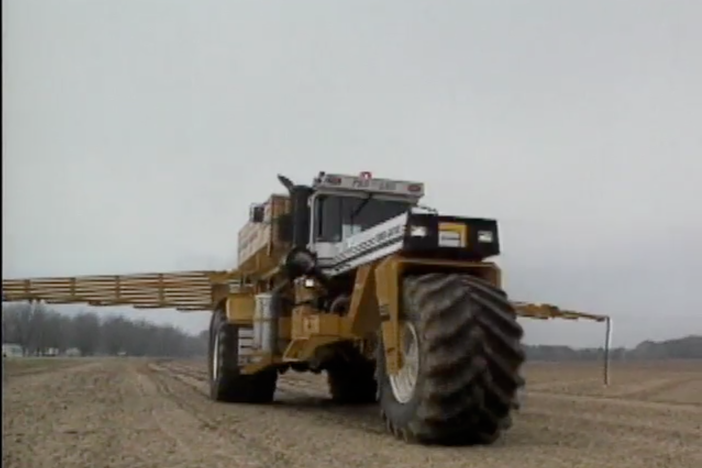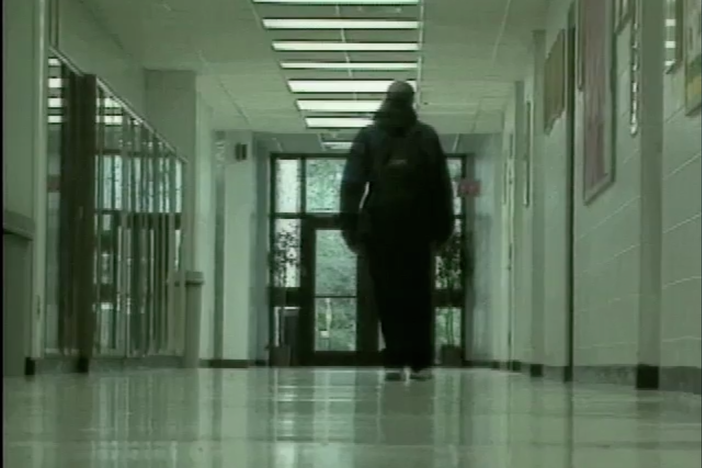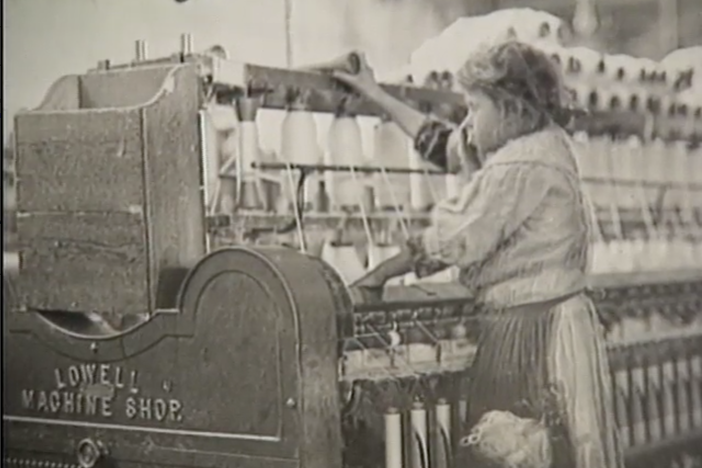Coming of Age in the 1950s
Today’s teen is twice as likely to get a job as a teenager in the 1950s. Back then young people were primarily concerned with school, sports, and having fun. Sprayberry High School Principal Paul Ross recalls his high school days and remembers that only a few classmates had jobs. Now, more than 5 million teenagers between the ages of 12-17 work voluntarily for pay. Principal Ross worries that school work suffers when teenagers work long hours.
Coming of Age in the 1950s
Today’s teen is twice as likely to get a job as a teenager in the 1950s. Back then young people were primarily concerned with school, sports, and having fun. Sprayberry High School Principal Paul Ross recalls his high school days and remembers that only a few classmates had jobs. Now, more than 5 million teenagers between the ages of 12-17 work voluntarily for pay. Principal Ross worries that school work suffers when teenagers work long hours.
Social Studies
Explain the causes of the American Revolution as they impacted Georgia; include the French and Indian War, Proclamation of 1763, and the Stamp Act.
Analyze the significance of the Loyalists and Patriots as a part of Georgia's role in the Revolutionary War; include the Battle of Kettle Creek and Siege of Savannah.
1. Compare the advantages and disadvantages for teens who work. Give some statistics to support the pros and cons of working.
2. In what ways does advertising affect teenager’s desire to work? In your opinion, are teens an important instrument in our economy? Justify your answer.
3. In what ways do teenagers contribute to the economy other than holding jobs?
1. Design a poll to be taken by high school students at each grade level to determine how many students work and how many hours per week they work. Report the results to the high school principal.
2. Set up an interview with teens that work and go to school. How do they have time to do this and keep up their grades at school? How does it help them? Why did they decide to do this? Do they wish they did not have to work? Do they like it?
work permit: a document signed by the parent or guardian that is required of anyone from 14-18 who wants a job, with the exception of agricultural or domestic work (you can pick apples, peaches, etc. or be a farmer and baby-sit without a work permit)
consumer: a person who buys goods and services
workforce: the group of people who work for a particular organization or business
1. Compare the advantages and disadvantages for teens who work. Give some statistics to support the pros and cons of working.
They become more independent when making money. They can buy more material items. They can learn to handle their money in a responsible way especially if they are saving for cars, paying insurance, etc. Some even have to contribute to the family income. It also gives them work experience that can be used in the future for other jobs. Those who work up to ten hours had higher grades. Some who are involved in work study programs do better in school work. Many times they do not get enough sleep if they work long hours or late shifts. Grades might drop. There is no free time to spend with friends and they don’t have time for sports or extra curricular activities. Those who work longer hours usually have their grades affected.
2. In what ways does advertising affect teenager’s desire to work? In your opinion, are teens an important instrument in our economy? Justify your answer.
Answers will vary. (Employment of teens in the workplace allows store owners and managers to employ lower-salaried workers. This keeps food costs low. Benefits are not usually provided, so overhead is also kept low. This enables them to sell the product at a competitive price.)
3. In what ways do teenagers contribute to the economy other than holding jobs?
Teenagers today usually receive an allowance from their parents even if they do not hold part-time jobs. They buy their clothes, their music, and other wants/needs with that allowance - or their earned money. Advertisements and a huge portion of the retail industry is geared to people from 13 years old to 30 years old. Fads and fashions are made to attract this age person more than those who are older, although that is beginning to change with the abundance of Baby Boomers growing older. Look up the statistics of how much this demographic spends on clothes, shoes, music and other entertainment each year. The amount is staggering and our economy depends greatly on teenagers both earning and spending their money.

